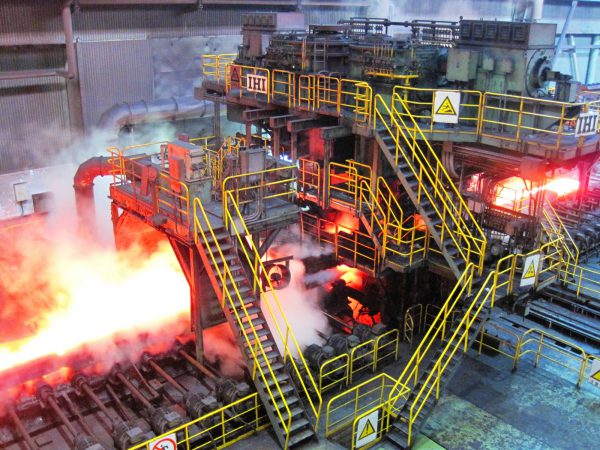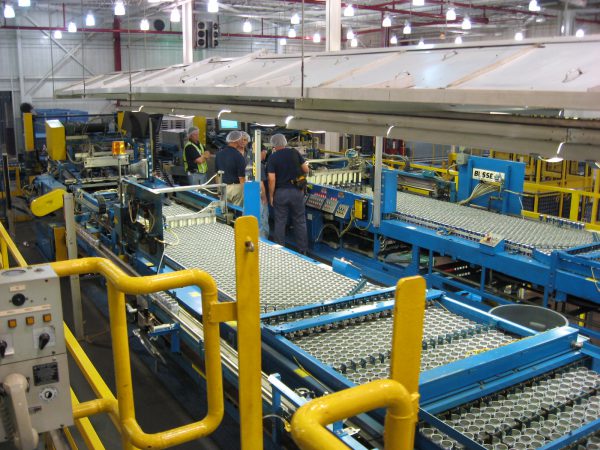Like all business sectors, the American manufacturing sector been impacted by the COVID-19 outbreak and the subsequent economic recession. Since we’re in the midst of both impacts, it may feel like this is our new normal. However, we need to keep in mind that there have been previous pandemics, numerous economic recessions (including the Great Recession), the Great Depression, and two World Wars, all within the past 100 years. We also need to keep in mind that through it all, the United States has survived and ultimately thrived, albeit with long-lasting changes brought on by the impact itself and American industry’s revised practices in response to the impacts.
In this article, I’ll discuss how the manufacturing market has fared thus far, what changes are occurring, and what changes will likely continue to gain strength. I’ll cover these impacts in terms of production, employment, supply chain disruptions, and long-term changes.

Production
Certain industries have seen significant downturn in business this year:
- Raw steel capacity utilization remains in the mid 50% range vs. being in the 80% range during 2019.
- Light vehicle production was down nearly 99% in April and remains down nearly 38.6% during the first half of 2020 versus the same period last year.
Conversely, certain industries have encountered 30% demand surges during the pandemic:
- Paper products producers have had difficulty keeping shelves stocked.
- Specialty chemical producers are retrofitting production lines and are working overtime to meet demands for hand sanitizers, disinfectants, and other cleaning products.
- Manufacturers of consumer technology products have seen surges, likely attributable to consumers’ increased reliance on these devices during the extended “work from home” period.
Employment
From an employer/employee standpoint, millions of jobs have been lost. With those losses, tremendous institutional knowledge has also been lost. The manufacturing industry was already struggling with an aging workforce and how to transfer this institutional knowledge to others.
In the short term, with production remaining down, this key demographic loss may not be felt. However, when production ramps up and those less familiar with the processes are asked to take on additional responsibilities, the losses may be impactful as they take on their new responsibilities without the benefit of having the transition of institutional knowledge occur from their predecessors.

Supply Chain Disruptions
Since a pandemic occurs over a large geographic area and impacts a high proportion of individuals, the global manufacturing supply chain has also been impacted.
China, being a leading manufacturer, was one of the first countries impacted by the pandemic. Its manufacturing output decreased, which resulted in disruptions to global supply chains. Over the past few decades, the U.S. has become more dependent upon China for many manufactured products, including personal protective equipment (PPE). As a result of this reliance combined with decreased production, PPE equipment was in short supply during the early stages of the pandemic.
It has been estimated that one out of every two manufacturing companies was not prepared for this supply chain disruption due to being reliant upon single suppliers and/or suppliers located in Asia and/or elsewhere. When the disruption hit, these manufacturers were unable to produce finished goods or were unable to meet customer expectations.
Long-term Changes
I’ve discussed how the pandemic and recession have impacted the U.S. and the global manufacturing economy. Now, let’s discuss what changes may take hold in the long term.
- Global supply chain realignment: As previously mentioned, approximately half of manufacturers’ supply chains weren’t robust enough to withstand the disruption. Manufacturers will likely complete stress tests to determine where they need to reinforce and diversify their supply chains. Likely outcomes will be increasing the number of suppliers, preferably in various geographies to reduce future country-specific impacts that may occur.
- Re-shoring: Manufacturers who have diversified their geographic footprint are considering bringing aspects of their manufacturing back to the U.S. This will not be an easy undertaking, but the U.S. Government is discussing providing incentives for manufacturers to take this step. For example, the CHIPS for America Act would provide more than $20B in financial incentives for manufacturers to establish their advanced chip manufacturing facilities in the U.S.
- On-shoring: Many U.S. manufacturers have foreign ownership. U.S.-based operations have significant upside for foreign-owned manufacturers, including being closer to their customers, having reduced shipping costs, and having access to reliable workforces. On-shoring trends will likely increase as foreign investors continue to view the U.S. as a good investment.
- Employee work schedules and locations: Throughout the pandemic, more manufacturers have had employees working remotely or on shifts to promote social distancing in manufacturing locations. After the pandemic is over, core manufacturing employees will need to continue working in the manufacturing facilities. However, those employees who support key manufacturing colleagues may have the opportunity to continue working in these flexible work opportunities as companies ramp back up to normal production. Reduced real estate costs and better employee work/life balances are two benefits.
- Increased reliance on technology: Use of robotics, autonomous vehicles, digitization, and related technologies will intensify. Increased use of these technologies will reduce worker health risk concerns, improve efficiency, and reduce costs. However, this will also result in some displaced workers being unable to return to their former jobs when full production returns.
This pandemic/recession reminds us that the only constant is change. We’re all experiencing—and will continue to experience—lasting changes to our manufacturing industry. These changes will remain long after a vaccine becomes available and the manufacturing industry is thriving again. Manufacturers are ever-adapting and, as before, they will again meet the needs of the post-pandemic economy.



Mark J Straszheim
Harry,
Thanks for a needed “overarching view” of the pandemic impact on us-as manufacturers, managers and as consumers. A follow-on question on workforce development: given the furloughs, early retires, loss of institutional know-how, etc., do you shift a policy shift away from FTE in favor of a “flexible” workforce (some may call it contractors, consultants, etc)?